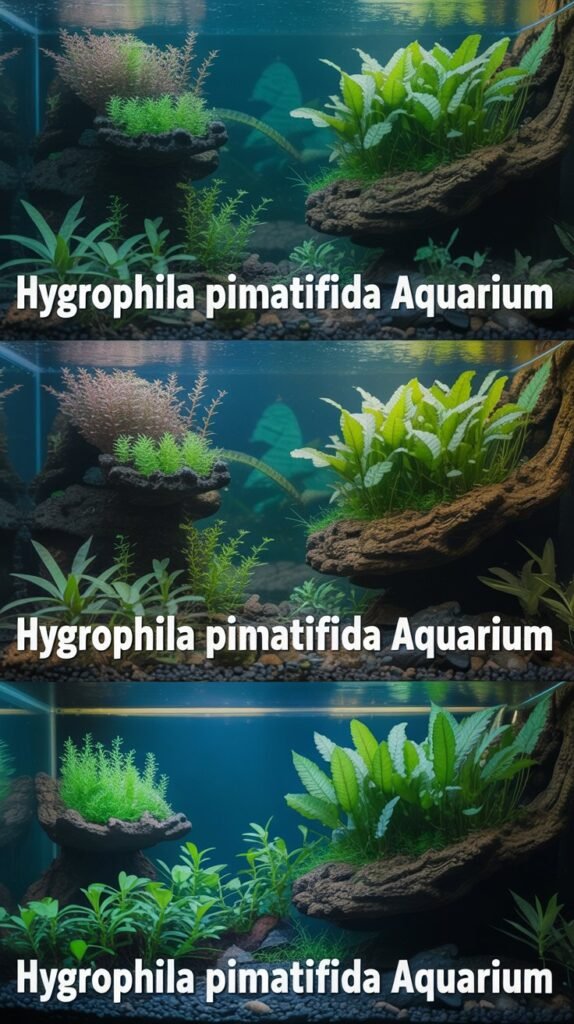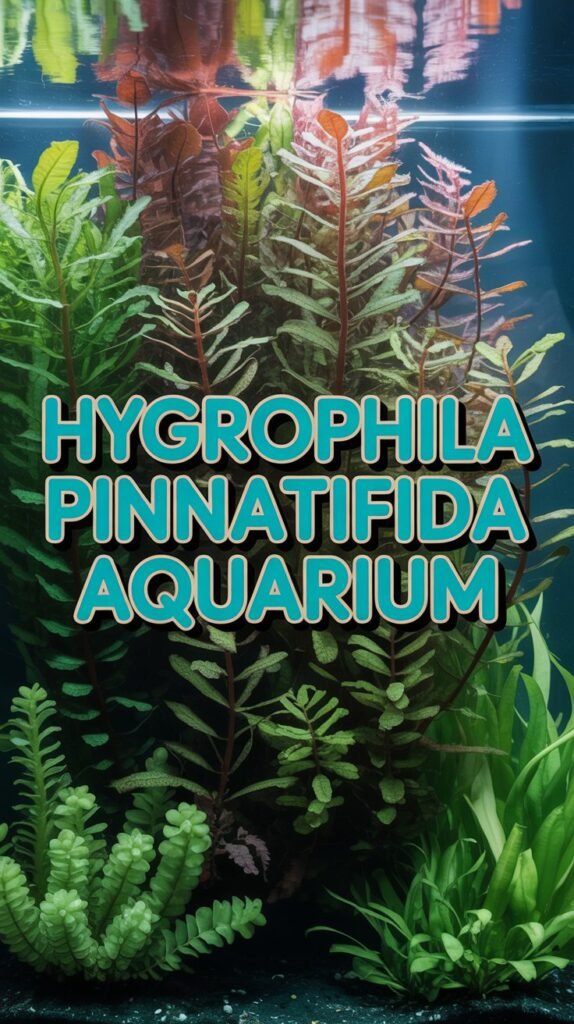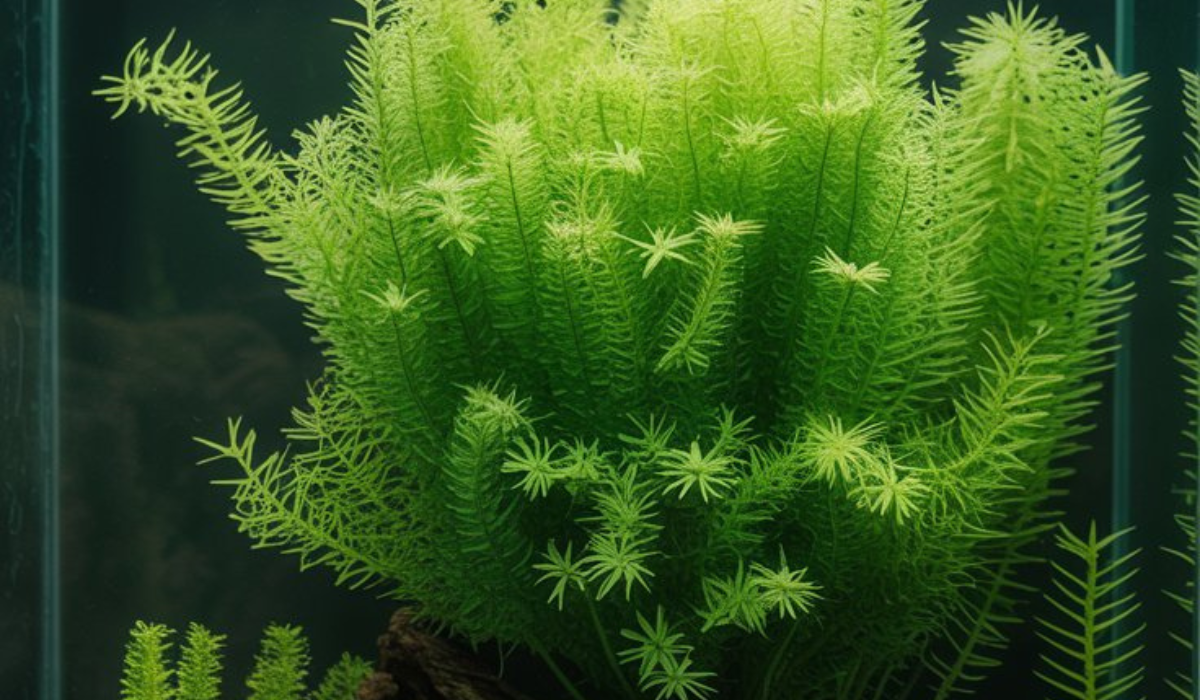If you’re looking for a plant that brings elegance, texture, and a unique appearance to your aquarium, Hygrophila pinnatifida is an excellent choice. Known for its beautiful fern-like leaves and earthy color tones, this aquatic plant adds a distinctive aesthetic that instantly elevates any aquascape. Whether you’re an aquascaping enthusiast or a beginner aquarist, growing Hygrophila pinnatifida in an aquarium can be a rewarding experience.
Native to India, this plant is part of the Acanthaceae family and is appreciated for its hardy nature and adaptability. It can grow both submerged and emersed, making it ideal for diverse aquarium setups. Its ability to attach to rocks, driftwood, and other hardscape materials adds dimension and depth to underwater landscapes.
In this comprehensive guide, we’ll explore everything you need to know about Hygrophila pinnatifida aquarium care, from planting and propagation to maintenance, lighting, and troubleshooting.
Understanding Hygrophila Pinnatifida
Hygrophila pinnatifida is an aquatic plant species that naturally grows along riverbanks, marshes, and submerged areas in India. Its name “pinnatifida” refers to its deeply lobed leaves, which resemble delicate feathers. This unique leaf structure makes it stand out from most aquarium plants.
When grown underwater, the leaves display shades of olive green, brown, and reddish tones, depending on the light intensity and nutrient levels. The underside of the leaves often shows a distinct reddish-brown color, adding contrast to the aquarium.
One of the most fascinating aspects of this plant is its versatility. It can be rooted in the substrate or attached to rocks and wood like Java Fern or Anubias. This flexibility makes it perfect for creating intricate aquascapes that mimic natural riverbeds or forest streams.
Features of Hygrophila Pinnatifida

- Scientific Name: Hygrophila pinnatifida
- Family: Acanthaceae
- Origin: India
- Growth Form: Stem and epiphyte plant
- Leaf Shape: Deeply lobed, fern-like
- Color: Olive green to reddish-brown
- Light Requirement: Medium to high
- CO₂ Requirement: Medium to high
- Temperature: 20–28°C (68–82°F)
- pH Range: 6.0–7.5
- Hardness: Soft to moderately hard water
These characteristics make Hygrophila pinnatifida a striking yet manageable plant that fits well in both natural-style and artistic aquascapes.
Benefits of Growing Hygrophila Pinnatifida in Aquariums
Adding Hygrophila pinnatifida to your aquarium does more than enhance its appearance—it contributes to the health and stability of your aquatic environment. Here are some notable benefits:
1. Natural Aesthetic Appeal
Its intricate, fern-like leaves add texture and movement, making your aquarium look more natural and dynamic. The plant’s unique growth pattern creates depth and contrast that complements other plants beautifully.
2. Oxygen Production
Like all aquatic plants, Hygrophila pinnatifida plays a role in photosynthesis, producing oxygen and helping maintain a healthy ecosystem for fish and shrimp.
3. Water Filtration
It helps absorb excess nitrates and phosphates, reducing algae growth and improving overall water quality.
4. Provides Shelter
Fish fry, shrimp, and smaller aquatic species often use the plant as a hiding spot for protection and breeding.
5. Adaptability
Its ability to grow on rocks, driftwood, or in the substrate means you can use it in various aquascaping layouts, from foreground accents to midground highlights or vertical decorations.
Ideal Aquarium Conditions for Hygrophila Pinnatifida
To help Hygrophila pinnatifida thrive, maintaining stable and suitable aquarium conditions is crucial. Here’s what you need to ensure:
1. Water Parameters
- Temperature: 20–28°C (68–82°F)
- pH: 6.0–7.5
- Hardness: Soft to moderately hard (3–12 dGH)
This plant prefers slightly acidic to neutral water. Avoid abrupt changes in temperature or pH, as fluctuations can cause leaf melt or stunted growth.
2. Lighting Requirements
Hygrophila pinnatifida requires medium to high light to display its best coloration. Under strong lighting, the leaves develop reddish-brown hues, while in lower light, they remain greenish and may grow slower.
Use high-quality LED or fluorescent lights that mimic natural daylight. Aim for 8–10 hours of consistent lighting per day.
3. CO₂ and Nutrients
Although Hygrophila pinnatifida can survive without CO₂ injection, it truly flourishes when supplemented. CO₂ enrichment promotes faster growth, stronger coloration, and healthier leaves.
Additionally, regular dosing of liquid fertilizers (especially iron and micronutrients) enhances leaf vibrancy and prevents nutrient deficiencies.
4. Water Flow
A gentle to moderate flow is ideal. It ensures nutrient distribution and prevents debris buildup around the plant’s base without disturbing its delicate leaves.
How to Plant Hygrophila Pinnatifida in an Aquarium

There are two main ways to grow Hygrophila pinnatifida—attached to hardscape or rooted in the substrate. The choice depends on your aquascaping design.
1. Attaching to Hardscape (Epiphytic Growth)
This is the most popular method.
Steps:
- Choose a piece of driftwood or rock.
- Secure the plant’s rhizome or base to the surface using cotton thread, fishing line, or plant glue.
- Avoid burying the rhizome in substrate—it should be exposed to avoid rot.
- Within a few weeks, the plant will attach itself naturally to the surface.
This method mimics its natural habitat and gives a wild, natural look to your aquascape.
2. Planting in Substrate
You can also root Hygrophila pinnatifida in nutrient-rich substrate.
Steps:
- Trim off the lower leaves from the stem base.
- Insert the stem into the substrate, ensuring it stands upright.
- Keep some space between stems for water circulation.
When planted in substrate, the plant grows upright like a stem plant and sends out lateral shoots that can be propagated easily.
Propagation of Hygrophila Pinnatifida
Propagation is simple and similar to other stem plants.
1. Cutting Method
- Cut healthy side shoots or top stems (at least 2–3 inches long).
- Replant the cuttings into the substrate or attach them to new hardscape surfaces.
- Over time, new roots will form, and the plant will begin to grow independently.
2. Rhizome Division
If your plant has developed multiple rhizomes, carefully separate them and attach each piece to a different area of the aquarium.
Regular propagation not only fills your aquarium beautifully but also helps maintain healthy, compact growth.
Growth Rate and Maintenance
Hygrophila pinnatifida has a moderate growth rate, especially under medium light and CO₂ conditions. However, under high light and rich nutrients, it can grow faster and require trimming every few weeks.
Maintenance Tips:
- Trim regularly to encourage bushier growth.
- Remove any dead or damaged leaves to prevent algae growth.
- Reposition overgrown plants to maintain balance in your aquascape.
- Ensure stable CO₂ and nutrient levels to avoid leaf melting or discoloration.
Consistency is key. With proper care, the plant will reward you with vibrant leaves and steady growth.
Common Problems and Solutions
Even though Hygrophila pinnatifida is relatively hardy, it can face certain issues if conditions are not ideal. Let’s look at common problems and how to fix them.
1. Leaf Melting
Cause: Sudden changes in water parameters, low CO₂, or nutrient imbalance.
Solution: Maintain stable conditions, trim affected leaves, and ensure consistent fertilization.
2. Algae Growth
Cause: Too much light or excess nutrients.
Solution: Reduce light hours, balance CO₂ and fertilizer dosing, and add algae eaters like Amano shrimp.
3. Pale or Yellow Leaves
Cause: Iron deficiency or low micronutrient levels.
Solution: Dose a comprehensive liquid fertilizer rich in iron and trace elements.
4. Slow Growth
Cause: Inadequate lighting or lack of CO₂.
Solution: Increase light intensity and consider adding CO₂ injection.
By monitoring these signs early, you can maintain a healthy and thriving aquarium.
Aquascaping Ideas with Hygrophila Pinnatifida

Hygrophila pinnatifida is a versatile plant that fits into multiple aquascaping styles.
1. Nature-Style Aquascape
Use it to mimic natural riverbeds by attaching it to rocks and driftwood. Combine with plants like Java Fern, Anubias, and Bucephalandra for a lush, wild look.
2. Dutch-Style Aquascape
Plant it in the midground for a pop of texture among colorful stem plants. Its brownish-green tones provide contrast against red or bright green species.
3. Jungle Aquascape
Allow it to grow freely among taller background plants for a dense, forest-like environment.
4. Iwagumi Style
Attach small clumps of Hygrophila pinnatifida around stones to create a natural, aged appearance.
Its adaptability makes it a favorite among aquascapers who enjoy experimenting with texture and color.
Tank Mates for Hygrophila Pinnatifida
Hygrophila pinnatifida is peaceful and can coexist with a wide variety of aquarium inhabitants.
Ideal Tank Mates:
- Guppies
- Neon Tetras
- Rasboras
- Corydoras
- Shrimp (Amano or Cherry Shrimp)
- Snails (Nerite or Mystery Snails)
Avoid housing it with plant-eating fish like Goldfish or large Cichlids, as they may damage its delicate leaves.
Does Hygrophila Pinnatifida Need CO₂?
While not absolutely essential, CO₂ injection significantly improves this plant’s appearance and growth rate. Without CO₂, the plant can survive, but it tends to grow slower and may not develop its characteristic reddish tones. If you aim for vibrant coloration and faster propagation, CO₂ supplementation is highly recommended.
How to Achieve the Best Coloration
Hygrophila pinnatifida can display shades ranging from green to deep brownish-red. To bring out the best colors:
- Provide high-intensity lighting (full spectrum LED).
- Dose iron-rich fertilizers regularly.
- Maintain stable CO₂ levels and low nitrate concentration.
- Avoid overcrowding the tank so light reaches the leaves evenly.
When these conditions are met, you’ll notice stunning hues that transform your aquarium into a living piece of art.
Tips for Beginners
If you’re new to aquarium plants, here are a few tips for success with Hygrophila pinnatifida:
- Start with a few stems or rhizomes and let them establish before adding more.
- Avoid frequent repositioning—this plant prefers stable placement.
- Use liquid fertilizers weekly to maintain nutrient balance.
- Be patient; it may take a few weeks to show new growth after planting.
- Keep lighting moderate at first to prevent algae until the plant stabilizes.
With consistent care, even beginners can enjoy the beauty of this extraordinary plant.
Conclusion
Hygrophila pinnatifida is more than just an aquarium plant—it’s an artistic statement. Its feathery leaves, rich coloration, and ability to grow on rocks or driftwood make it a showpiece in any aquascape. Beyond its beauty, it contributes to a healthy ecosystem by producing oxygen, absorbing waste, and providing shelter for aquatic life.
Whether you’re creating a lush jungle aquascape or a minimalist nature tank, Hygrophila pinnatifida aquarium setups add texture, depth, and serenity. With proper lighting, nutrients, and CO₂, this plant will thrive and reward you with vibrant growth and a stunning display.
Embrace this plant as a central or complementary element in your aquarium and watch as it transforms your underwater world into a peaceful, living masterpiece.
Frequently Asked Questions (FAQs)
1. Is Hygrophila pinnatifida easy to grow?
Yes, it’s moderately easy to grow with proper lighting and nutrient supply. It’s suitable for both intermediate and advanced aquarists.
2. Does Hygrophila pinnatifida need CO₂?
While it can survive without CO₂, it grows healthier and shows richer coloration when CO₂ is provided.
3. Can Hygrophila pinnatifida grow on rocks and wood?
Absolutely! It can attach to rocks, driftwood, and other hard surfaces, making it a great choice for natural aquascaping.
4. How fast does Hygrophila pinnatifida grow?
It has a moderate growth rate. Under high light and CO₂, it grows faster, but in low light, it remains compact and slower-growing.
5. Why are the leaves of my Hygrophila pinnatifida turning yellow?
Yellowing leaves often indicate iron deficiency or poor nutrient balance. Regular fertilization helps prevent this issue.
6. Can I use Hygrophila pinnatifida in a low-tech aquarium?
Yes, but expect slower growth and greener coloration. Supplementing with liquid fertilizers helps in low-tech tanks.
7. How do I propagate Hygrophila pinnatifida?
You can propagate it by cutting healthy side shoots or dividing rhizomes and replanting them in the desired area.
8. What are good plants to pair with Hygrophila pinnatifida?
It pairs beautifully with Anubias, Bucephalandra, Java Fern, and mosses in most aquascape layouts.

